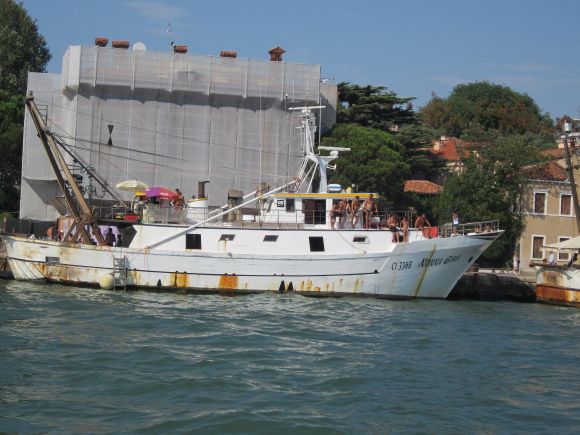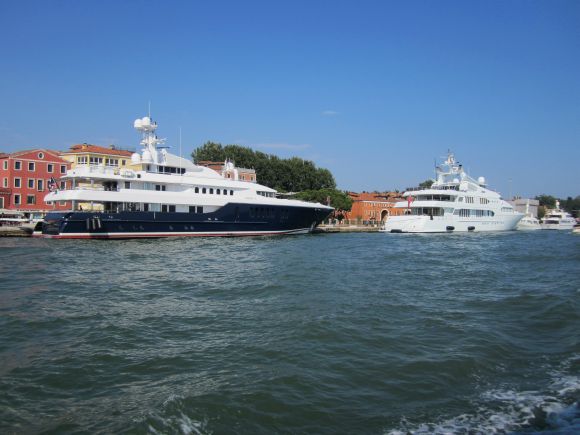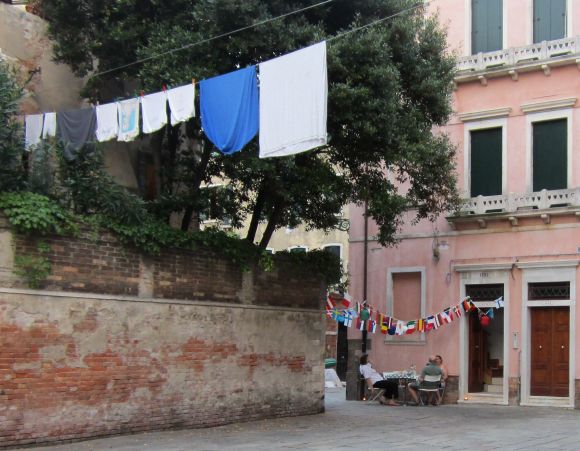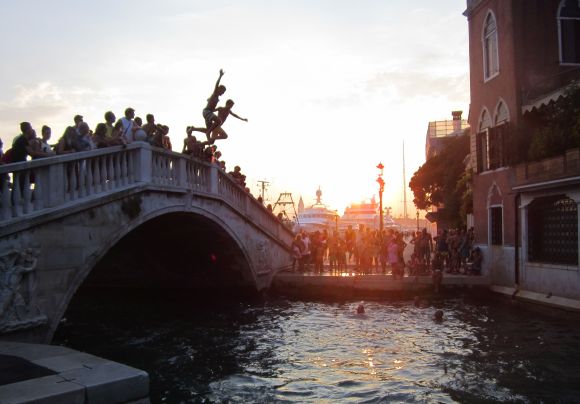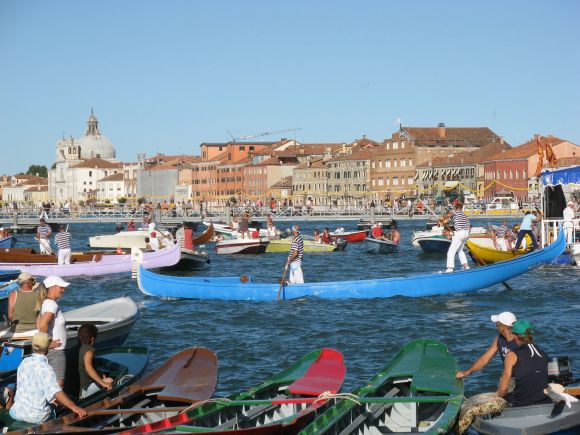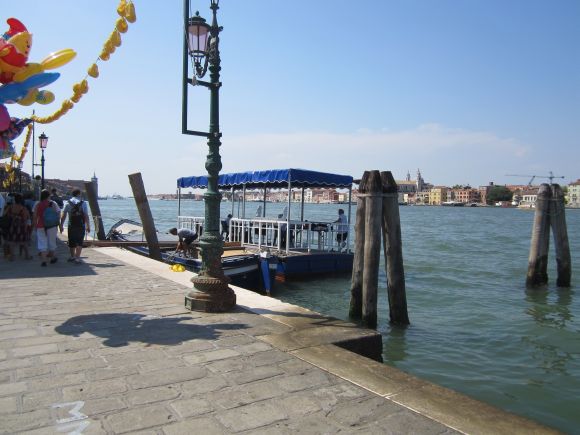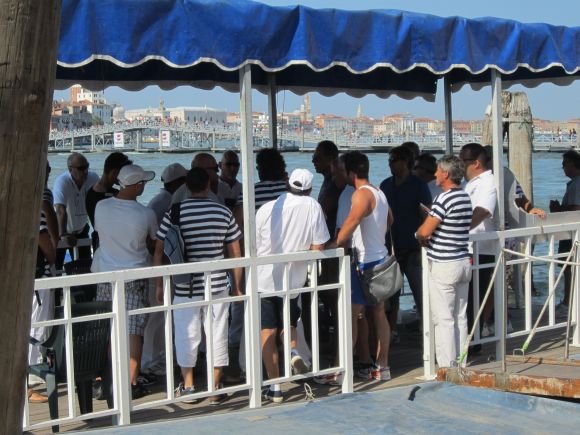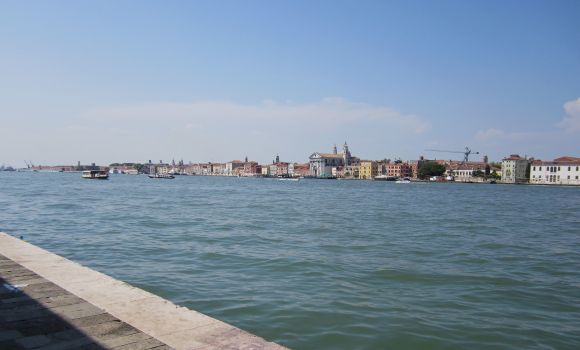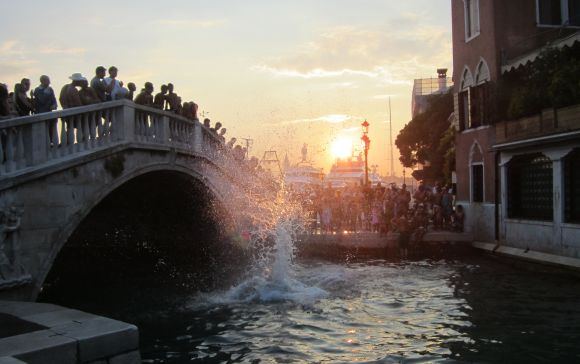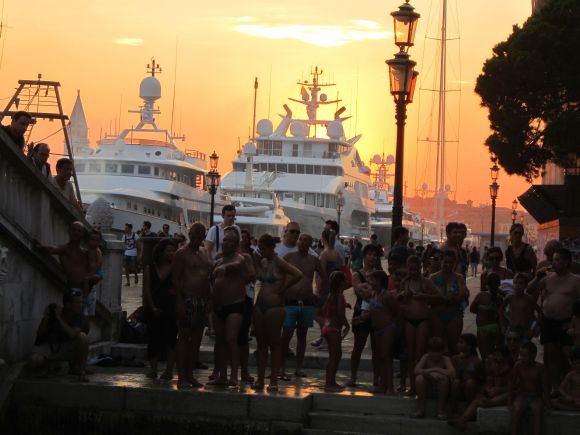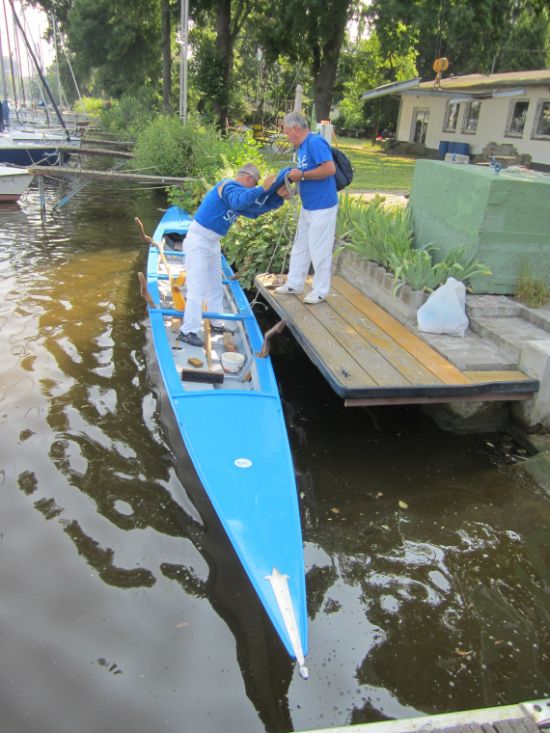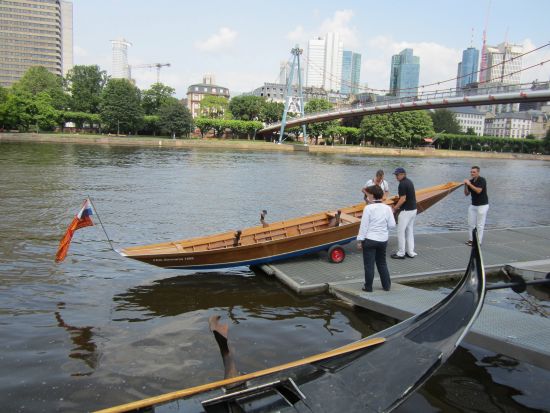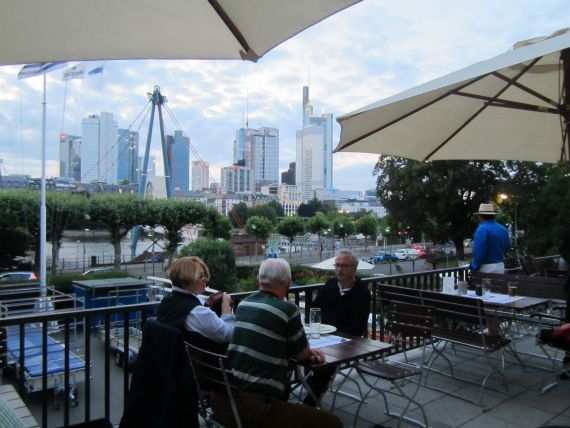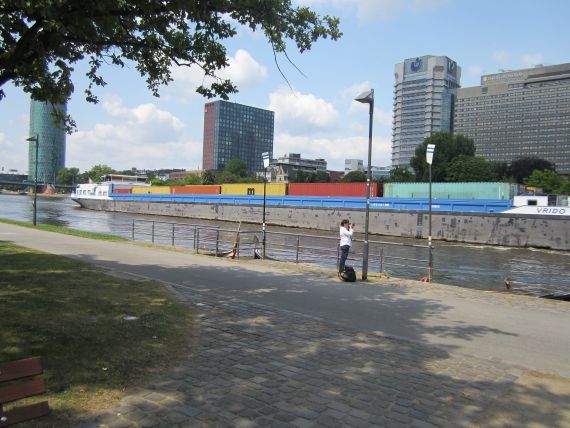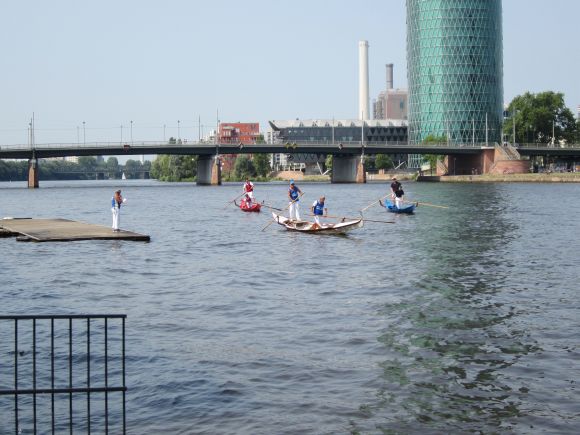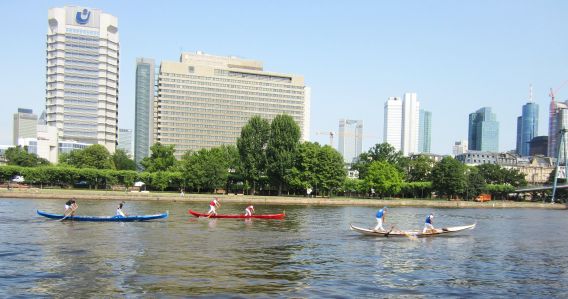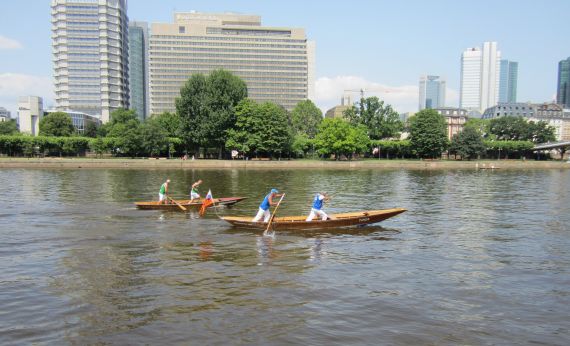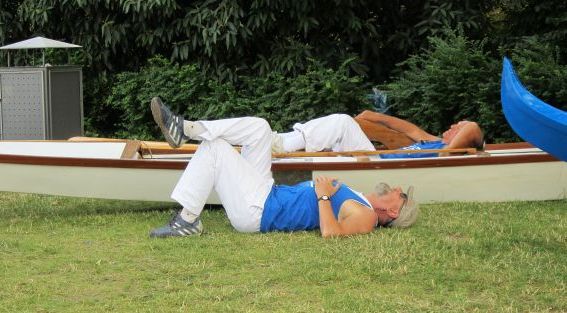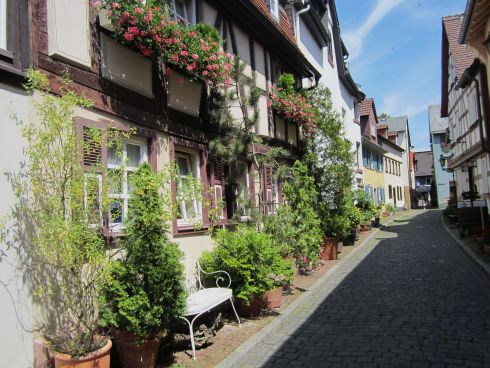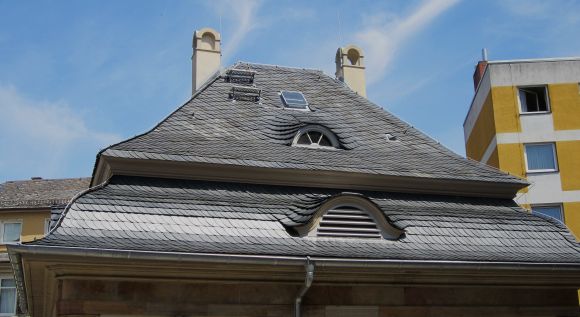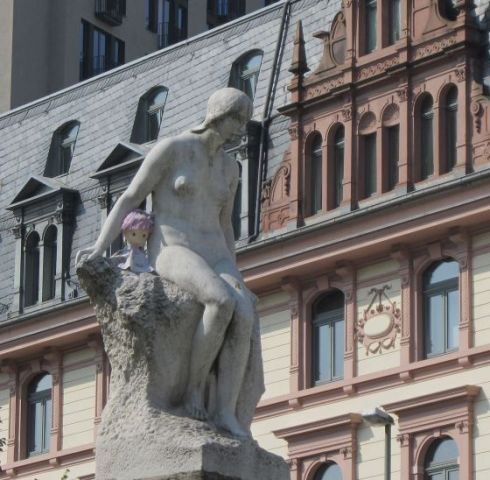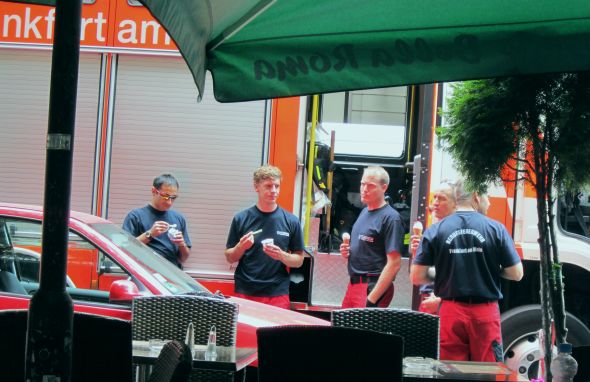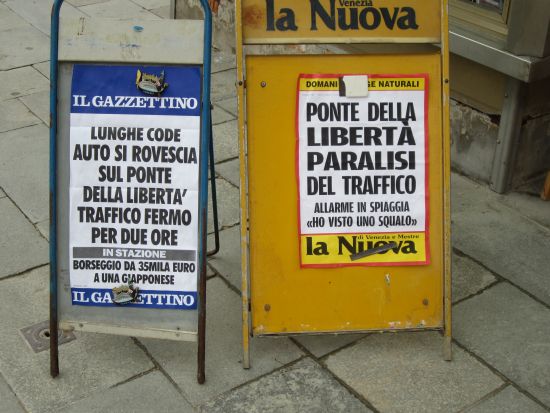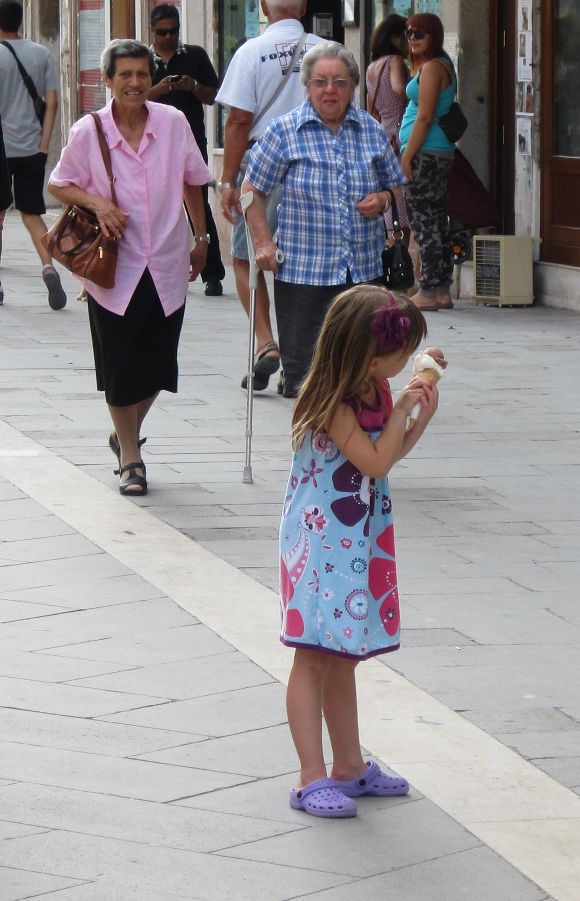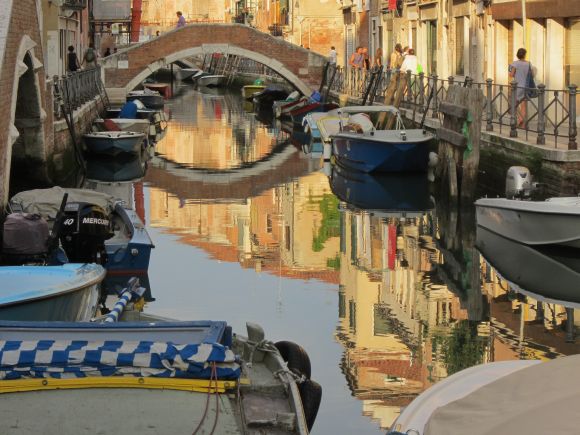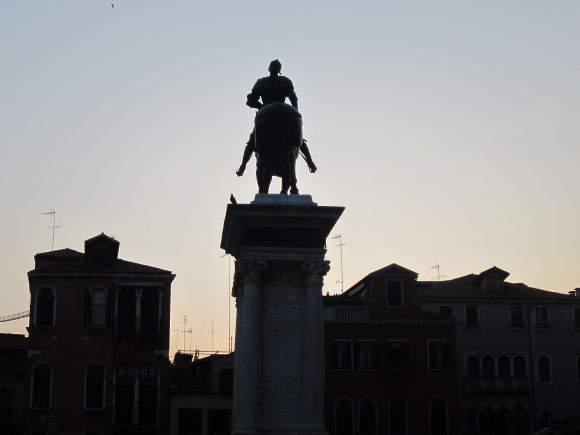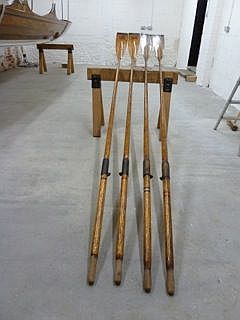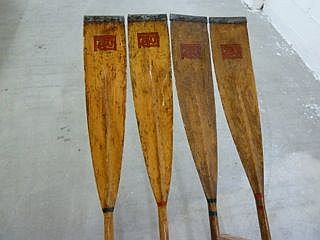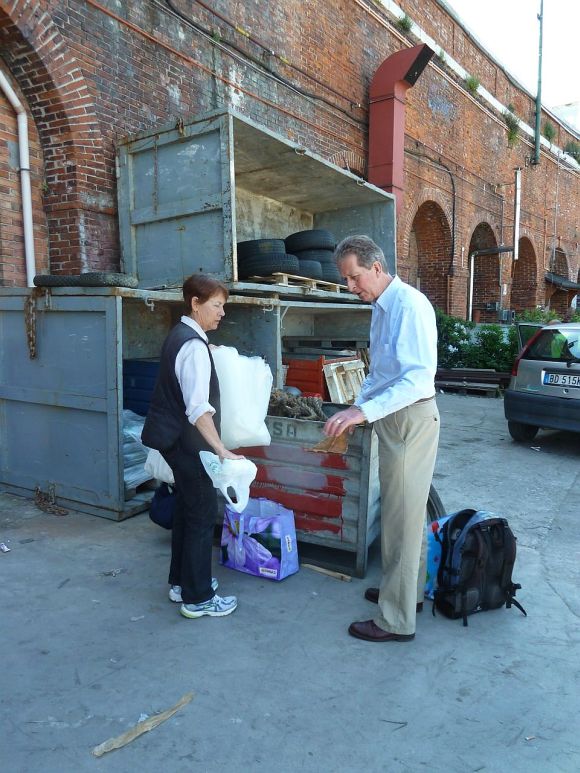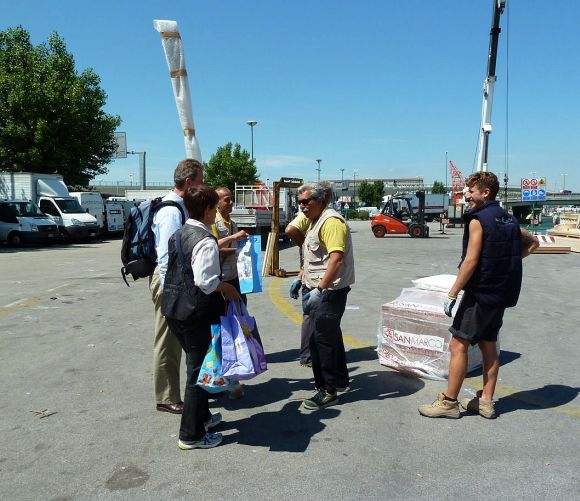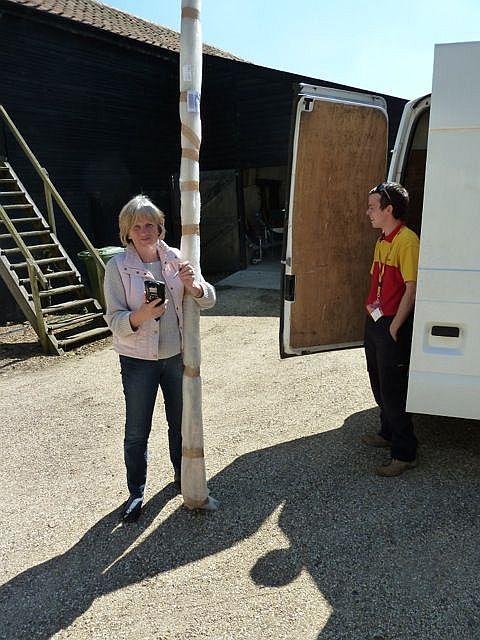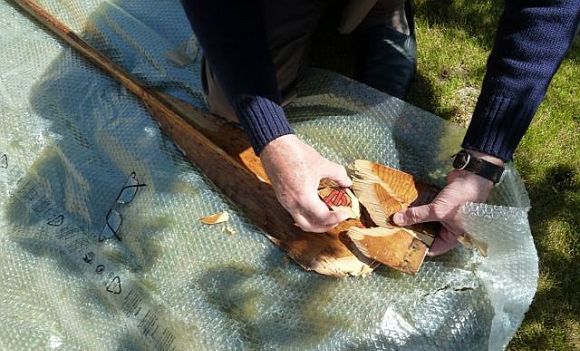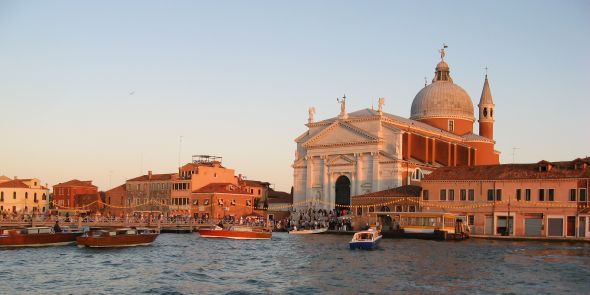
Anyone who has lived longer than 25 minutes has discovered the Law of Unintended Consequences. It’s not that you are deprived of the consequence you wanted — though you might well be — but discover that you’re stuck with five that you didn’t want and can’t escape.
Last Sunday (July 21) was the day of the Feast of the Most Holy Redeemer (Santissimo Redentore), about which I have written many times. And for an event which has been held every year since 1577, hence qualifying as a genuine tradition, this tradition’s components have gone through many, many revisions. In fact, I never knew that a tradition could be so pliable.
For example: Fireworks over the Bacino of San Marco. When Lino was a lad, nobody bothered about the Bacino. Everybody (99 percent Venetians) came in their boats (and there were many — no, a hundred times more than many — all propelled by oars) and tied them up in the Giudecca Canal in the area between the votive bridge and the Molino Stucky. Far from the Bacino. Uptown. Washington Heights, practically.
And the races on Sunday afternoon. We’ve always had them, hence, we always will have them.
Or maybe not.
The week preceding the festa saw a fearsome struggle between the racers and the Comune, and after a series of meetings and reports on meetings, which occurred up until race time, the racers enacted a protest and decided not to race. In a word, they went on strike.
Their issues, as reported by the Racers’ Association, are the increasing neglect (“profound abandonment”) of the races by the city over the past few years. I’m not clear on what “neglect” means here, because their press releases were not especially specific, though I know that the prizes have been dwindling and, in some cases, disappearing, which indeed is disturbing.
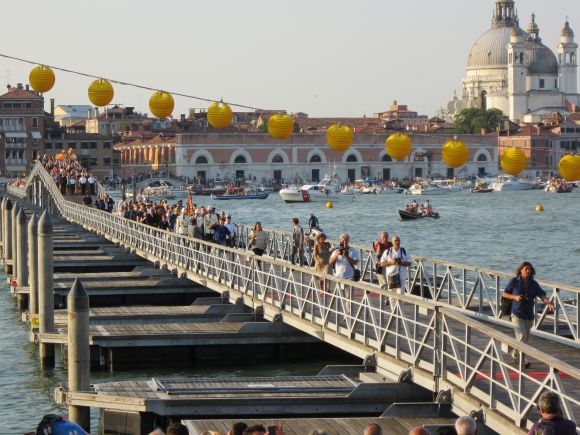
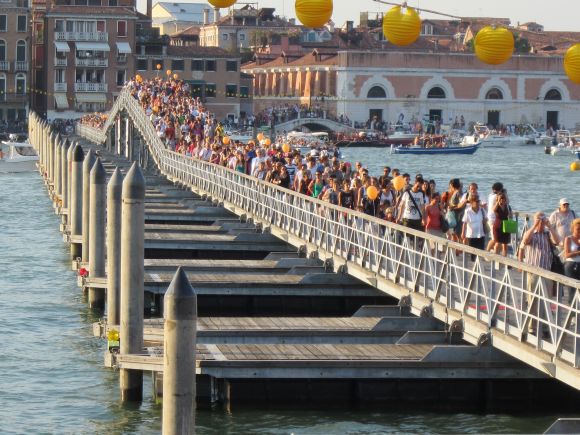
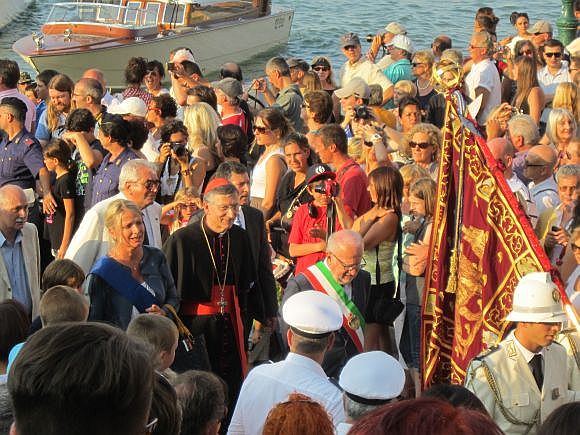
A digression: Unlike the racers in the old days — up to about 50 years ago — I don’t believe that any racers today need the money. While it’s true that they have, as they put it, “spent months of training, sacrificing work and family” (they sacrificed WORK?), none of them races because otherwise the gas company is going to interrupt service for lack of payment. The men have jobs ranging from acceptable to spectacularly lucrative (a fancy way of saying “gondolier”), and most of the women racers are married to them.
But racing for nothing does have a depressing sort of parish-benefit vibe, and last year some of the races began to be put on for free.
Did I mention depressing? I had no idea how dejected one could feel on a so-called feast day when the big event is canceled. Some hardy souls might maintain that the big solemn mass and the blessing of the city are the most important elements of the weekend, and there are thousands upon thousands who come only for the big fireworks party the night before. But a Redentore afternoon with no races made me feel as if we were the ones who had been abandoned.
Naturally the racers hope and intend that this dramatic gesture will bear the fruit they desire, which is to wake everybody up, city and citizens, to the imminent demise of one of the last — or last — truly Venetian elements still barely surviving in the most beautiful city in the world.
I hope it all works out for them, but I have some mini-doubts. One is based on the suspicion that if they try this again, somebody in the city government is going to wonder why go through all the tsuris with the big-league racers when there are plenty of bush-league rowers around who could do the same thing, for nothing, without complaining. Tourists don’t know the difference. I agree that it’s an ugly thought, but I have thought it.
Or what about this idea: If the tsuris continues, the city could start canceling races. Another possible unintended consequence, almost as unpleasant as racing for free.
Or the city might even make the racers pay to race. Or at least make them pay for the race they didn’t do last Sunday. Because when you sign up to enter the eliminations, you sign a document that says you agree to the terms of the enterprise. I have no idea if the city, which did incur expenses for an event which didn’t take place through no fault of its own, would regard this as breach of contract and consider legal recourse against the racers. If I were a city, I would think so.
Let me conclude with another disagreeable little idea that has come to my mind via other people who have said it out loud. Why is all this happening now? Some people think that the Racers’ Association got all het up because two of the biggest rock-star racers (Giampaolo D’Este and Igor Vignotto) were punished for serious offenses committed during the regata at Murano on July 7. Their punishment was to be forbidden to participate in the next race, i.e. the Redentore.
Apart from the right or wrong of this decision, it is objectionable for two reasons. One: Their partners, who hadn’t done anything wrong, were also, by extension, also excluded from the race of the Redentore. Two: There is an undercurrent of doubt among some participants that the Racers’ Association would have gotten so all-fired mad if, say, Irving B. Potash and Melvin Bluebonnet or anybody else had been so punished. Perhaps righteous anger based entirely on principles (deterioration of tradition, say) isn’t quite so righteous after all? Or does it strike only me as odd that the people who claim to be the last defenders of tradition were the first to break it to bits?
And you thought that parties were supposed to make you forget your troubles? This one just delivered a whole new batch. Some assembly required.
